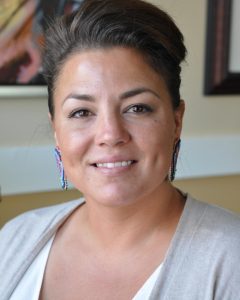-
FNTC: NEWS
The Canadian Property Tax Association
The Canadian Property Tax Association (CPTA) is happy to provide the readers of Clearing the Path insight into the Canadian Property Tax Association (CPTA). Our organization has worked with the First Nations Tax Commission (FNTC) for over 10 years, providing commentary and support on FNTC legislative reform and implementation of property tax initiatives. Prior to formation of the FNTC, the CPTA worked closely with the former Indian Taxation Advisory Board.
The CPTA was founded in 1967 and brings together a uniquely qualified array of top corporate property tax officers, lawyers, tax consultants, and government officials. The CPTA consists of four regional chapters being British Columbia, Ontario, Quebec and Eastern Canada, and Western. A Board of Directors oversees the membership and operations of the CPTA on a national level and provides guidance and support to the four Chapters.
The CPTA’s focus is to advocate from the perspective of the taxpayer, and our statement of policy includes that “Assessment of real property should be based on market value, provide fairness, equity, simplicity and predictability, and be economic to administer.” The CPTA also supports that “Property assessments should be based on an annual, common valuation date and the actual state and condition of the property as of that date.”
The constitution of the CPTA sets the aims and objectives of the organization as follows:
- to provide a forum and information exchange in the field of assessment and taxation of property
- to promote the equitable assessment of property tax purposes along sound and uniform lines
- to study existing and proposed legislation and make representations to Governments
- to perform such other functions as are consonant with the foregoing purposes.
The CPTA keeps our membership informed of current issues and developments through informative luncheons, education seminars hosted by the individual Chapters, and a bi-monthly newsletter, Communication Update. The CPTA also takes an active role in consultation with government and participates in numerous stakeholder committees providing insight from the taxpayer’s point of view. In 2019, we have been particularly active in our work with assessment changes in the province of Alberta and in Ontario.
In the fall of each year our members gather at a National Workshop for 3 days of learning seminars, and the opportunity to network with other experts from across Canada. FNTC has been a longtime presenter at the National Workshop, and the CPTA appreciates the support and attendance of FNTC at the workshop.
Most recently, on September 18, 2019, in St. John’s NL, FNTC’s Deputy Chief Commissioner, Mr. David Paul, along with Director, Policy and Law Review, Mr. Trenton Paul presented a FNTC national overview to our delegates. We were also privileged to meet with FNTC Chief Commissioner, Mr. CT (Manny) Jules and the recently appointed Chief Operating Officer, Ms. Marlene Gaudry.
The CPTA and the FNTC are aligned in our objective of promoting transparency and clarity. The FNTC’s efforts in communicating with stakeholders through its website, First Nations Gazette and this newsletter are commendable. We at the CPTA look forward to continuing to build the relationship between our organizations through continued and productive dialogue.
Shawna Burke-Martin Mark Cathro
Executive Vice President, CPTA Chair, Western Chapter – CPTA
The FNTC welcomes Commissioner Georjann Morriseau
The First Nations Tax Commission (FNTC) welcomes Georjann Morriseau as a Commissioner. In June 2019, Georjann Morriseau was appointed for a term of five years.
Commissioner Morriseau is from Thunder Bay, Ontario, and is a former Chief and Councillor of the Fort William First Nation. She is currently the Director of Indigenous Affairs and Government Relations for Resolute Forest Products for Ontario and Quebec.
“I wish to congratulate Ms. Morriseau on her appointment to the Commission,” said FNTC Chief Commissioner Manny Jules. “She has long been an advocate for both the objectives of the First Nations Fiscal Management Act and the collection of property tax on reserve. Her knowledge and experience enable her to make an immediate contribution as a Commissioner.”
The First Nations Tax Commission administers and regulates the taxation regime under the First Nations Fiscal Management Act, including approving local revenue laws, developing sample laws and by-laws, developing and delivering accredited training, and reconciling First Nation government and taxpayer interests.
The FNTC is a shared-governance institution. The Governor-in-Council appoints nine of the Commissioners and the Native Law Centre of Canada at the University of Saskatchewan appoints one Commissioner. There is currently one vacancy.
—
Clearing the Path sat down with Commissioner Morriseau to discuss the FNTC and her new role.
Why it important for you to be a part of the FNTC?
I see the First Nations Tax Commission as supporting the development of our communities. The FMA framework provides a fundamental way for First Nation governments to start to get out from under the Indian Act and begin the process of making decisions for the betterment of their communities. It is meaningful work to help communities achieve their goals of self-sustainability. It is real and tangible work to help communities assert their jurisdiction.
Why is jurisdiction important?
One important aspect of jurisdiction centres on what laws First Nation governments can make to govern themselves. This includes services like education, health, land management, parks, roads and administration. Historically, these services and our lands have been governed for us. We as First Nations have the opportunity and the right to govern ourselves. For example, having tax jurisdiction on reserve provides communities economic stability, the ability to collect revenue to pay for growing their communities and it and opens the door for economic development.
What are your thoughts about property taxation and its growth across Canada?
In the past few years there has been more interest from First Nations who see opportunities for economic development in their territories. First Nations are becoming empowered and are leading examples for other First Nations. First Nations in Ontario have become more interested in discussing the benefits of property taxation. I think many First Nations want to assert their jurisdiction, sometimes it’s just a matter of *how*. This is where the FNTC can help. That’s the type of work we get to do… the how.
Tell us about your experience being an Indigenous woman in leadership.
We are seeing a rise of women not only in leadership, but in decision-making roles. I’m very happy to see Indigenous women recognized for being strong, smart and valuable. In my experience, I’ve had a lot of ups and downs, but it has all been informative. It has helped to broaden my world view. I recognize and appreciate the ability of Indigenous women to relate and connect to each other. It has been helpful to me. Our experience is unique and helps to inform our strength as women and as leaders.

FNTC and Southern Chiefs Organization sign MOU
The First Nations Tax Commission (FNTC) and the Southern Chiefs Organization (SCO) signed an MOU on September 18, 2019 in Winnipeg, Manitoba; as part of the Chiefs-in-Summit meeting, to formalize a partnership to work on developing a tax framework that will lead to more self-governance. The MOU was signed by SCO Grand Chief Jerry Daniels and FNTC Chief Commission Manny Jules.
“Business is happening all around us and we are not involved. They are operating in our territories and should be paying a tax. This agreement allows the SCO to access the FNTC’s expertise to help facilitate investment in our communities,” said Grand Chief Daniels.
The FNTC first began working with the SCO in the fall of 2018, and this MOU formalizes their working relationship.
“The FNTC, through this MOU, is committed to working with the Southern Chiefs Organization, in a cooperative and mutually supportive manner, to help grow SCO First Nation economies, jurisdictions and fiscal powers and establish an improved First Nation fiscal relationship,” said Chief Commissioner Jules.
This MOU establishes a work plan and strategy including:
- Developing a taxation framework
- Training for designated SCO staff at the Tulo Centre of Indigenous Economics
- Increase economic benefits before lands are added to First Nation jurisdiction
- Maximize fiscal benefits through efficient ATRs
- Infrastructure capital and financial planning
- Implement FMA powers
- Work with other governments
- Work with other FMA institutions
The SCO represents 34 First Nations in Southern Manitoba. The SCO was established by the Chiefs of Southern Manitoba to protect, preserve, promote and enhance First Nation’s people’s inherent rights, languages, customs and traditions through the application and implementation of the spirit and intent of the Treaty-making process.
Update from BC Assessment: Two Important changes to Vancouver Island First Nations for 2019
Mobile Home Assessments
Leading up to the preparation of the 2019 First Nation assessment rolls, BC Assessment conducted a review of all Mobile Home assessments on Vancouver Island. This review included verification of all existing mobile home improvements using both aerial imagery and on-site inspections, and a review of the land assessments for those homes, including research of comparable fee simple sales of mobile homes off reserve. The result was significant increases for mobile home assessments.
This assessment review was necessary because the 2018 Assessment Review Boards for both the Songhees Nation and the Tsawout First Nation indicated that BC Assessment should be using the same approach to valuation for mobile homes as it uses for other residential properties. While land assessments for single family dwellings located within these First Nation jurisdictions were similar to the assessments of comparable property assessments off reserve, the Board noted that land assessments of mobile home occupiers were lower and that this resulted in inequity in the assessments. In their decisions, the Assessment Review Boards found that BC Assessment should be using a direct comparison approach when valuing mobile homes, and strongly urged the Assessor to correct the mobile home assessments for the 2019 Rolls.
The assessment increases were communicated to the mobile home occupiers through a Pre-Roll Letter delivered in early December 2018, followed by the formal Assessment Notice in early January 2019. BC Assessment recently held taxpayer information meetings at both the Songhees Nation and the Tsawout First Nation.
BC Assessment is currently responding to inquiries from individual mobile home occupiers on Vancouver Island. BC Assessment expects numerous reconsideration requests and also anticipates appeals resulting from the increase in assessments. BC Assessment will provide an appraisal report to the appropriate Assessment Review Boards in defence of each appeal.
New Assessments for Billboards
BC Assessment conducted a Billboard Assessment Review that included identifying all existing billboards and conducting the land and improvement assessments for these occupations. This project was contemplated for a number of years, during which time BC Assessment researched the best assessment methodology to use. BC Assessment has implemented both a direct comparison and an income approach to valuation in order to assess the land on which billboards are located. This required extensive research into both off reserve comparable sales and lease documentation available on reserve. The billboard improvements have been assessed using a depreciated cost of replacement approach. It is important to note that BC Assessment is assessing the occupation of these lands and improvements and not the value associated with an advertising business.
Leading up to the final delivery of the 2019 Assessment Notices, BC Assessment notified affected First Nations and the billboard operators. Considering the unique nature of these assessments, BC Assessment expects that there may be appeals.
Moving Forward
BC Assessment is hopeful that both these initiatives will be met with success when any appeals are heard by the appropriate Assessment Review Boards and their decisions are delivered. BC Assessment is currently considering expanding these changes to all other First Nation customers throughout the Province and will plan accordingly. An important part of that plan will include
communication with property occupiers and each affected First Nation. Success will depend on open lines of communication between BC Assessment and the affected First Nations, including provision of the necessary information that assists BC Assessment in correctly creating the annual assessment rolls. For the Billboard Assessment Review, BC Assessment depends heavily on information provided by the First Nation, and asks that all of its FMA and Indian Act customers obtain lease documentation for billboard occupations and send that information to BC Assessment as soon as possible.
For more information on the assessment or mobile homes, or to provide billboard information, please contact BC Assessment at firstnations@bcassessment.ca.
Understanding Assessment of First Nation Lands
Understanding Assessment of First Nation Lands under the First Nations Fiscal Management Act and section 83 of the Indian Act.
First Nations contract with qualified, independent assessors to assess the leases, licenses and other occupations of their lands (generally referred to as “interests in land”). Over the past 30 years, a national approach to assessment of these interests in land has developed. To understand the approach and the reasons for the approach, it is important to understand the key elements of First Nation taxation systems.
How are First Nations Lands different from other land in Canada?
First Nation lands are “reserve” lands, the title to which is held by the Government of Canada for the use and benefit of the First Nation. This means that reserve lands do not have titles that are registered in the provincial land title office, and that no one can own a fee simple interest in the reserve lands. Even the First Nation itself does not have a fee simple interest in the land.
What types of interests in land exist on reserve lands?
There are different ways that non-members of the First Nation may occupy reserve lands. The most common way is through a lease either with a member of the First Nation or with the First Nation itself. Leases can range from short term, such as 10 years, to long term, usually up to 99 years. Leases can be pre-paid for the term or have annual payments with periodic rent reviews. It is common for different types of leases with varying terms to exist on a single reserve at any given time.
There may also be short or long-term licenses of occupation, permits to occupy, or rental agreements, and there may also be simple occupations of reserve lands without any legal documentation.
What interests in land are taxable on reserve lands?
Provincial property tax systems generally levy taxes on the fee simple interest of a property, and it is the owner of the fee simple interest who is liable for the taxes. Because there are no fee simple interests in reserve lands, a different approach is necessary.
First Nation property tax systems levy taxes on occupiers of reserve lands, regardless of the nature of the occupation. This means that occupiers of reserve lands, whether they hold a lease, license, permit or simply occupy the land, can be liable for taxes. In this sense, the taxation is on the occupation of the land, and not related to the specific way that the person occupies the reserve lands.
Occupations can be for a range of uses, including residential, commercial, industrial, agricultural or utility. The full range of occupations can be taxable, just as they are off reserve.
How are occupations of reserve lands assessed?
Where provincial property tax is levied on the fee simple interest, the province assesses the value of the fee simple interest. Although the specific rules and approach vary among the provinces, generally the objective is to determine the market value of the property.
A common approach to determine market value is the sale price of the property on the open market. Some provincial systems also have rules for assessing non-fee simple interests that are taxable, including leases, licenses and other occupations. Where a person is occupying Crown land (whether by lease, license or otherwise), that person’s occupation is taxable, and the provincial assessment legislation directs the assessor to assess the occupation based on the full market value of the property as though it were held in fee simple by the occupier.
First Nations across Canada have adopted this approach to assessment of occupational interests in their reserve lands. On reserve lands, it is the First Nation’s property assessment law which governs how the assessor must assess each interest in land, as provincial assessment legislation does not apply. The approach is reflected in each First Nation’s property assessment law, which generally direct the assessor to assess each interest in land as though it is held in fee simple off reserve. It is “off reserve” because there is no fee simple interest in reserve land, there tends to be a lack of comparable data on reserve lands, it avoids issues of reserve land valuation, and it provides for a similar tax burden to off reserve properties.
Why is this approach the best assessment approach for First Nation property tax systems?
There are several reasons why this approach is used and why it makes sense for First Nation property taxation systems.
- The approach is used provincially for occupational interests and is familiar to taxpayers.
- The approach enables assessors to use the same rules for assessment that are used provincially, which are based on fee simple assessments. This means the assessment process does not require new and different rules, has comparable properties, and is cost effective to implement.
- The approach ensures that tax revenues do not depend on whether the occupation is under a lease, license or other arrangement or on the time remaining on the occupation. The assessed value and proportional share of taxes for a class of property will be the same as off reserve lands, whether a property is held under a lease or a license or whether that tenure is short or long term. This ensures a similar distribution of tax liability as is achieved on non-reserve lands.
- Using an approach that is similar to the system used off reserve enables First Nations and their taxpayers to compare their annual tax rates to adjacent non-reserve jurisdictions.
How are taxes determined on reserve lands?
The method for determining taxes on reserve lands is the same as for properties on non-reserve lands. The First Nation sets annual tax rates for each property class (e.g. residential, commercial etc.). The applicable tax rate is multiplied by the assessed value of the property to create a tax bill. First Nation tax rates are similar, and in many cases identical, to those of adjacent governments. Using a similar assessment method means that taxpayers pay similar amounts to amounts paid off reserve.
30th Anniversary of Bill C-115
This year marks the 30th Anniversary that Bill C-115, better known as the “Kamloops Amendment”, received Royal Assent.
Our ancestors and leaders have fought hard for our jurisdiction. It is precious. We must assert it. We must protect it and we must continue to clear the path for others.
– Chief Commissioner Jules
This indigenous-led amendment to the Indian Act made it possible for First Nations to begin implementing property taxation, significantly increasing revenue options and expanding jurisdiction. While the step taken in 1988 is of historical significance, it is important to remember that the restoration of First Nation tax jurisdiction did not start there. In 1875, the Mohawks of Tyendinaga attempted to implement a property tax system but were turned down by the Department of Indian Affairs. Later, in 1927, the ability for First Nations to raise revenues was removed. Progress took a long time and and a lot of effort from many dedicated individuals.
In 1988, Bill C-115 created First Nation property tax jurisdiction. The Supreme Court of Canada stated in 1995 that First Nation tax jurisdiction was “an inherently governmental power”, and it wasn’t until 2005 that First Nations were able to formalize and expand their tax jurisdiction with the First Nations Fiscal Management Act.
Since that time, First Nation communities have generated over $1 Billion in cumulative tax revenues and have established new jurisdictions over revenues such as development cost charges, taxation for the provision of services and business activity taxes.
-
CLEARING THE PATH: NEWS & SUCCESS STORIES
The Canadian Property Tax Association
The Canadian Property Tax Association (CPTA) is happy to provide the readers of Clearing the Path insight into the Canadian Property Tax Association (CPTA). Our organization has worked with the First Nations Tax Commission (FNTC) for over 10 years, providing commentary and support on FNTC legislative reform and implementation of property tax initiatives. Prior to formation of the FNTC, the CPTA worked closely with the former Indian Taxation Advisory Board.
The CPTA was founded in 1967 and brings together a uniquely qualified array of top corporate property tax officers, lawyers, tax consultants, and government officials. The CPTA consists of four regional chapters being British Columbia, Ontario, Quebec and Eastern Canada, and Western. A Board of Directors oversees the membership and operations of the CPTA on a national level and provides guidance and support to the four Chapters.
The CPTA’s focus is to advocate from the perspective of the taxpayer, and our statement of policy includes that “Assessment of real property should be based on market value, provide fairness, equity, simplicity and predictability, and be economic to administer.” The CPTA also supports that “Property assessments should be based on an annual, common valuation date and the actual state and condition of the property as of that date.”
The constitution of the CPTA sets the aims and objectives of the organization as follows:
- to provide a forum and information exchange in the field of assessment and taxation of property
- to promote the equitable assessment of property tax purposes along sound and uniform lines
- to study existing and proposed legislation and make representations to Governments
- to perform such other functions as are consonant with the foregoing purposes.
The CPTA keeps our membership informed of current issues and developments through informative luncheons, education seminars hosted by the individual Chapters, and a bi-monthly newsletter, Communication Update. The CPTA also takes an active role in consultation with government and participates in numerous stakeholder committees providing insight from the taxpayer’s point of view. In 2019, we have been particularly active in our work with assessment changes in the province of Alberta and in Ontario.
In the fall of each year our members gather at a National Workshop for 3 days of learning seminars, and the opportunity to network with other experts from across Canada. FNTC has been a longtime presenter at the National Workshop, and the CPTA appreciates the support and attendance of FNTC at the workshop.
Most recently, on September 18, 2019, in St. John’s NL, FNTC’s Deputy Chief Commissioner, Mr. David Paul, along with Director, Policy and Law Review, Mr. Trenton Paul presented a FNTC national overview to our delegates. We were also privileged to meet with FNTC Chief Commissioner, Mr. CT (Manny) Jules and the recently appointed Chief Operating Officer, Ms. Marlene Gaudry.
The CPTA and the FNTC are aligned in our objective of promoting transparency and clarity. The FNTC’s efforts in communicating with stakeholders through its website, First Nations Gazette and this newsletter are commendable. We at the CPTA look forward to continuing to build the relationship between our organizations through continued and productive dialogue.
Shawna Burke-Martin Mark Cathro
Executive Vice President, CPTA Chair, Western Chapter – CPTA
The FNTC welcomes Commissioner Georjann Morriseau
The First Nations Tax Commission (FNTC) welcomes Georjann Morriseau as a Commissioner. In June 2019, Georjann Morriseau was appointed for a term of five years.
Commissioner Morriseau is from Thunder Bay, Ontario, and is a former Chief and Councillor of the Fort William First Nation. She is currently the Director of Indigenous Affairs and Government Relations for Resolute Forest Products for Ontario and Quebec.
“I wish to congratulate Ms. Morriseau on her appointment to the Commission,” said FNTC Chief Commissioner Manny Jules. “She has long been an advocate for both the objectives of the First Nations Fiscal Management Act and the collection of property tax on reserve. Her knowledge and experience enable her to make an immediate contribution as a Commissioner.”
The First Nations Tax Commission administers and regulates the taxation regime under the First Nations Fiscal Management Act, including approving local revenue laws, developing sample laws and by-laws, developing and delivering accredited training, and reconciling First Nation government and taxpayer interests.
The FNTC is a shared-governance institution. The Governor-in-Council appoints nine of the Commissioners and the Native Law Centre of Canada at the University of Saskatchewan appoints one Commissioner. There is currently one vacancy.
—
Clearing the Path sat down with Commissioner Morriseau to discuss the FNTC and her new role.
Why it important for you to be a part of the FNTC?
I see the First Nations Tax Commission as supporting the development of our communities. The FMA framework provides a fundamental way for First Nation governments to start to get out from under the Indian Act and begin the process of making decisions for the betterment of their communities. It is meaningful work to help communities achieve their goals of self-sustainability. It is real and tangible work to help communities assert their jurisdiction.
Why is jurisdiction important?
One important aspect of jurisdiction centres on what laws First Nation governments can make to govern themselves. This includes services like education, health, land management, parks, roads and administration. Historically, these services and our lands have been governed for us. We as First Nations have the opportunity and the right to govern ourselves. For example, having tax jurisdiction on reserve provides communities economic stability, the ability to collect revenue to pay for growing their communities and it and opens the door for economic development.
What are your thoughts about property taxation and its growth across Canada?
In the past few years there has been more interest from First Nations who see opportunities for economic development in their territories. First Nations are becoming empowered and are leading examples for other First Nations. First Nations in Ontario have become more interested in discussing the benefits of property taxation. I think many First Nations want to assert their jurisdiction, sometimes it’s just a matter of *how*. This is where the FNTC can help. That’s the type of work we get to do… the how.
Tell us about your experience being an Indigenous woman in leadership.
We are seeing a rise of women not only in leadership, but in decision-making roles. I’m very happy to see Indigenous women recognized for being strong, smart and valuable. In my experience, I’ve had a lot of ups and downs, but it has all been informative. It has helped to broaden my world view. I recognize and appreciate the ability of Indigenous women to relate and connect to each other. It has been helpful to me. Our experience is unique and helps to inform our strength as women and as leaders.

FNTC and Southern Chiefs Organization sign MOU
The First Nations Tax Commission (FNTC) and the Southern Chiefs Organization (SCO) signed an MOU on September 18, 2019 in Winnipeg, Manitoba; as part of the Chiefs-in-Summit meeting, to formalize a partnership to work on developing a tax framework that will lead to more self-governance. The MOU was signed by SCO Grand Chief Jerry Daniels and FNTC Chief Commission Manny Jules.
“Business is happening all around us and we are not involved. They are operating in our territories and should be paying a tax. This agreement allows the SCO to access the FNTC’s expertise to help facilitate investment in our communities,” said Grand Chief Daniels.
The FNTC first began working with the SCO in the fall of 2018, and this MOU formalizes their working relationship.
“The FNTC, through this MOU, is committed to working with the Southern Chiefs Organization, in a cooperative and mutually supportive manner, to help grow SCO First Nation economies, jurisdictions and fiscal powers and establish an improved First Nation fiscal relationship,” said Chief Commissioner Jules.
This MOU establishes a work plan and strategy including:
- Developing a taxation framework
- Training for designated SCO staff at the Tulo Centre of Indigenous Economics
- Increase economic benefits before lands are added to First Nation jurisdiction
- Maximize fiscal benefits through efficient ATRs
- Infrastructure capital and financial planning
- Implement FMA powers
- Work with other governments
- Work with other FMA institutions
The SCO represents 34 First Nations in Southern Manitoba. The SCO was established by the Chiefs of Southern Manitoba to protect, preserve, promote and enhance First Nation’s people’s inherent rights, languages, customs and traditions through the application and implementation of the spirit and intent of the Treaty-making process.
Update from BC Assessment: Two Important changes to Vancouver Island First Nations for 2019
Mobile Home Assessments
Leading up to the preparation of the 2019 First Nation assessment rolls, BC Assessment conducted a review of all Mobile Home assessments on Vancouver Island. This review included verification of all existing mobile home improvements using both aerial imagery and on-site inspections, and a review of the land assessments for those homes, including research of comparable fee simple sales of mobile homes off reserve. The result was significant increases for mobile home assessments.
This assessment review was necessary because the 2018 Assessment Review Boards for both the Songhees Nation and the Tsawout First Nation indicated that BC Assessment should be using the same approach to valuation for mobile homes as it uses for other residential properties. While land assessments for single family dwellings located within these First Nation jurisdictions were similar to the assessments of comparable property assessments off reserve, the Board noted that land assessments of mobile home occupiers were lower and that this resulted in inequity in the assessments. In their decisions, the Assessment Review Boards found that BC Assessment should be using a direct comparison approach when valuing mobile homes, and strongly urged the Assessor to correct the mobile home assessments for the 2019 Rolls.
The assessment increases were communicated to the mobile home occupiers through a Pre-Roll Letter delivered in early December 2018, followed by the formal Assessment Notice in early January 2019. BC Assessment recently held taxpayer information meetings at both the Songhees Nation and the Tsawout First Nation.
BC Assessment is currently responding to inquiries from individual mobile home occupiers on Vancouver Island. BC Assessment expects numerous reconsideration requests and also anticipates appeals resulting from the increase in assessments. BC Assessment will provide an appraisal report to the appropriate Assessment Review Boards in defence of each appeal.
New Assessments for Billboards
BC Assessment conducted a Billboard Assessment Review that included identifying all existing billboards and conducting the land and improvement assessments for these occupations. This project was contemplated for a number of years, during which time BC Assessment researched the best assessment methodology to use. BC Assessment has implemented both a direct comparison and an income approach to valuation in order to assess the land on which billboards are located. This required extensive research into both off reserve comparable sales and lease documentation available on reserve. The billboard improvements have been assessed using a depreciated cost of replacement approach. It is important to note that BC Assessment is assessing the occupation of these lands and improvements and not the value associated with an advertising business.
Leading up to the final delivery of the 2019 Assessment Notices, BC Assessment notified affected First Nations and the billboard operators. Considering the unique nature of these assessments, BC Assessment expects that there may be appeals.
Moving Forward
BC Assessment is hopeful that both these initiatives will be met with success when any appeals are heard by the appropriate Assessment Review Boards and their decisions are delivered. BC Assessment is currently considering expanding these changes to all other First Nation customers throughout the Province and will plan accordingly. An important part of that plan will include
communication with property occupiers and each affected First Nation. Success will depend on open lines of communication between BC Assessment and the affected First Nations, including provision of the necessary information that assists BC Assessment in correctly creating the annual assessment rolls. For the Billboard Assessment Review, BC Assessment depends heavily on information provided by the First Nation, and asks that all of its FMA and Indian Act customers obtain lease documentation for billboard occupations and send that information to BC Assessment as soon as possible.
For more information on the assessment or mobile homes, or to provide billboard information, please contact BC Assessment at firstnations@bcassessment.ca.
Understanding Assessment of First Nation Lands
Understanding Assessment of First Nation Lands under the First Nations Fiscal Management Act and section 83 of the Indian Act.
First Nations contract with qualified, independent assessors to assess the leases, licenses and other occupations of their lands (generally referred to as “interests in land”). Over the past 30 years, a national approach to assessment of these interests in land has developed. To understand the approach and the reasons for the approach, it is important to understand the key elements of First Nation taxation systems.
How are First Nations Lands different from other land in Canada?
First Nation lands are “reserve” lands, the title to which is held by the Government of Canada for the use and benefit of the First Nation. This means that reserve lands do not have titles that are registered in the provincial land title office, and that no one can own a fee simple interest in the reserve lands. Even the First Nation itself does not have a fee simple interest in the land.
What types of interests in land exist on reserve lands?
There are different ways that non-members of the First Nation may occupy reserve lands. The most common way is through a lease either with a member of the First Nation or with the First Nation itself. Leases can range from short term, such as 10 years, to long term, usually up to 99 years. Leases can be pre-paid for the term or have annual payments with periodic rent reviews. It is common for different types of leases with varying terms to exist on a single reserve at any given time.
There may also be short or long-term licenses of occupation, permits to occupy, or rental agreements, and there may also be simple occupations of reserve lands without any legal documentation.
What interests in land are taxable on reserve lands?
Provincial property tax systems generally levy taxes on the fee simple interest of a property, and it is the owner of the fee simple interest who is liable for the taxes. Because there are no fee simple interests in reserve lands, a different approach is necessary.
First Nation property tax systems levy taxes on occupiers of reserve lands, regardless of the nature of the occupation. This means that occupiers of reserve lands, whether they hold a lease, license, permit or simply occupy the land, can be liable for taxes. In this sense, the taxation is on the occupation of the land, and not related to the specific way that the person occupies the reserve lands.
Occupations can be for a range of uses, including residential, commercial, industrial, agricultural or utility. The full range of occupations can be taxable, just as they are off reserve.
How are occupations of reserve lands assessed?
Where provincial property tax is levied on the fee simple interest, the province assesses the value of the fee simple interest. Although the specific rules and approach vary among the provinces, generally the objective is to determine the market value of the property.
A common approach to determine market value is the sale price of the property on the open market. Some provincial systems also have rules for assessing non-fee simple interests that are taxable, including leases, licenses and other occupations. Where a person is occupying Crown land (whether by lease, license or otherwise), that person’s occupation is taxable, and the provincial assessment legislation directs the assessor to assess the occupation based on the full market value of the property as though it were held in fee simple by the occupier.
First Nations across Canada have adopted this approach to assessment of occupational interests in their reserve lands. On reserve lands, it is the First Nation’s property assessment law which governs how the assessor must assess each interest in land, as provincial assessment legislation does not apply. The approach is reflected in each First Nation’s property assessment law, which generally direct the assessor to assess each interest in land as though it is held in fee simple off reserve. It is “off reserve” because there is no fee simple interest in reserve land, there tends to be a lack of comparable data on reserve lands, it avoids issues of reserve land valuation, and it provides for a similar tax burden to off reserve properties.
Why is this approach the best assessment approach for First Nation property tax systems?
There are several reasons why this approach is used and why it makes sense for First Nation property taxation systems.
- The approach is used provincially for occupational interests and is familiar to taxpayers.
- The approach enables assessors to use the same rules for assessment that are used provincially, which are based on fee simple assessments. This means the assessment process does not require new and different rules, has comparable properties, and is cost effective to implement.
- The approach ensures that tax revenues do not depend on whether the occupation is under a lease, license or other arrangement or on the time remaining on the occupation. The assessed value and proportional share of taxes for a class of property will be the same as off reserve lands, whether a property is held under a lease or a license or whether that tenure is short or long term. This ensures a similar distribution of tax liability as is achieved on non-reserve lands.
- Using an approach that is similar to the system used off reserve enables First Nations and their taxpayers to compare their annual tax rates to adjacent non-reserve jurisdictions.
How are taxes determined on reserve lands?
The method for determining taxes on reserve lands is the same as for properties on non-reserve lands. The First Nation sets annual tax rates for each property class (e.g. residential, commercial etc.). The applicable tax rate is multiplied by the assessed value of the property to create a tax bill. First Nation tax rates are similar, and in many cases identical, to those of adjacent governments. Using a similar assessment method means that taxpayers pay similar amounts to amounts paid off reserve.
30th Anniversary of Bill C-115
This year marks the 30th Anniversary that Bill C-115, better known as the “Kamloops Amendment”, received Royal Assent.
Our ancestors and leaders have fought hard for our jurisdiction. It is precious. We must assert it. We must protect it and we must continue to clear the path for others.
– Chief Commissioner Jules
This indigenous-led amendment to the Indian Act made it possible for First Nations to begin implementing property taxation, significantly increasing revenue options and expanding jurisdiction. While the step taken in 1988 is of historical significance, it is important to remember that the restoration of First Nation tax jurisdiction did not start there. In 1875, the Mohawks of Tyendinaga attempted to implement a property tax system but were turned down by the Department of Indian Affairs. Later, in 1927, the ability for First Nations to raise revenues was removed. Progress took a long time and and a lot of effort from many dedicated individuals.
In 1988, Bill C-115 created First Nation property tax jurisdiction. The Supreme Court of Canada stated in 1995 that First Nation tax jurisdiction was “an inherently governmental power”, and it wasn’t until 2005 that First Nations were able to formalize and expand their tax jurisdiction with the First Nations Fiscal Management Act.
Since that time, First Nation communities have generated over $1 Billion in cumulative tax revenues and have established new jurisdictions over revenues such as development cost charges, taxation for the provision of services and business activity taxes.








